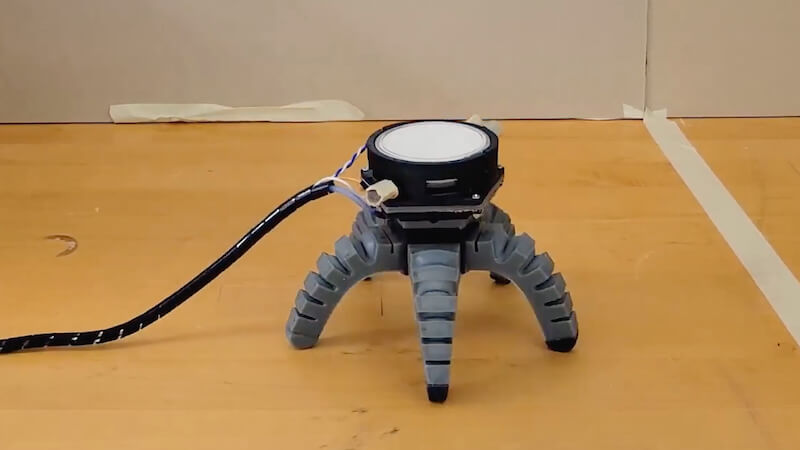
Researchers have developed a novel biohybrid robot that is controlled by a fungus. More precisely, the robot controlled via mycelia. Fungi use these to react to environmental stimuli.
Cornell University researchers have recently developed a new type of robot that is controlled by a king oyster mushroom. To make this possible, the scientists integrated mycelia, the thread-like roots of the fungus, into the robot hardware. This allows the robot to react to the environment using electrical signals.
The so-called biohybrid robot is based on a combination of biological and artificial materials. The researchers hope that such robots will be used, for example, to explore oceans or in agriculture.
Biohybrid robot: Fungus takes control via mycelia
The fungus’s mycelia can generate small electrical signals that are detected by the robot’s electrodes and converted into digital information. This information, in turn, controls the movements of the biohybrid. In one experiment, for example, it reacted to UV light and then changed its locomotion.
Research shows that fungi may be able to control the functions of robots more efficiently than artificial systems. In the future, such biohybrid robots could be used in agriculture and for environmental monitoring. Among other things, they could analyze the chemical status of soils and add fertilizer if necessary.
Ethical considerations and challenges of technology
Fungi could also serve as a basis for other biohybrid technologies, such as ecosystem monitoring or pollutant detection. According to experts, the technology has great potential, especially in areas where monitoring of environmental conditions is necessary.
Although this research appears promising, there are ethical concerns about the potential impacts on ecosystems. Because if biohybrid robots are used in large numbers in natural environments, they could disrupt the balance in these environments. It is therefore important to take these aspects into account before using the technologies.
Also interesting:
- Graphene foil: Researchers improve performance of lithium-ion batteries
- Surprising discovery: Researchers increase the performance of lithium-ion batteries
- Smaller than a grain of sand: Researchers are developing batteries for tiny robots
- Alternative to air conditioning? Researchers are developing innovative building cooling
The post Biohybrid with robot legs: Researchers teach fungus to walk by Felix Baumann appeared first on BASIC thinking. Follow us too Facebook, Twitter and Instagram.
As a Tech Industry expert, I find the concept of biohybrid robots with robot legs fascinating and innovative. The idea of combining biological organisms with robotic technology opens up a whole new realm of possibilities for creating advanced and adaptable machines.
The research on teaching fungus to walk is a groundbreaking development that showcases the potential of biohybrid technology. By harnessing the natural movement abilities of living organisms, such as fungi, and integrating them with robotic components, scientists can create robots that are more agile, flexible, and resilient.
This technology has the potential to revolutionize various industries, such as healthcare, agriculture, and environmental monitoring. Biohybrid robots with robot legs could be used for tasks that require navigating complex and unpredictable environments, such as search and rescue missions or exploration in hazardous areas.
Overall, biohybrid technology holds great promise for the future of robotics and I am excited to see how researchers continue to explore and develop this cutting-edge field.
Credits